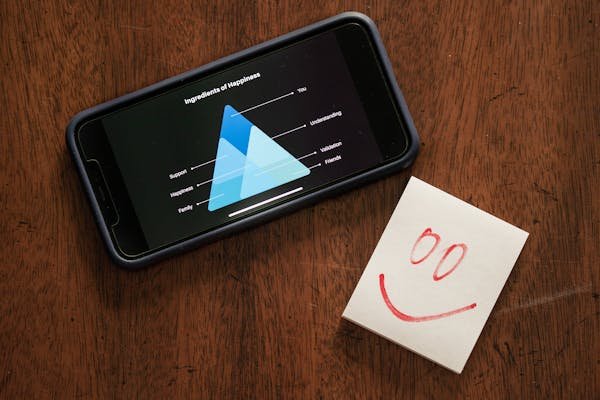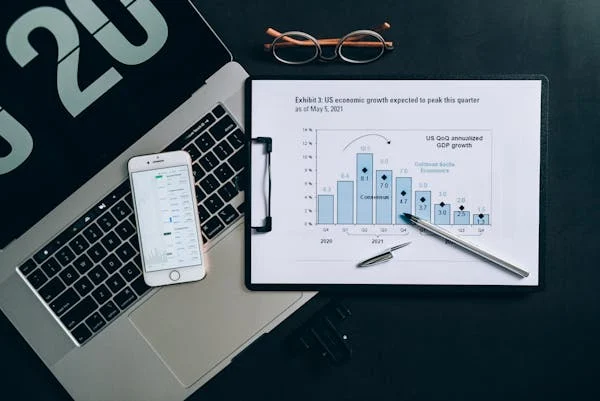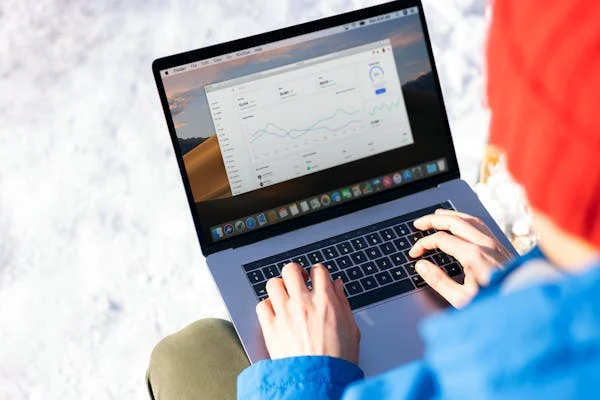Choosing the right model to acquire and convert users is a big deal—especially when you’re building or growing a digital product. It’s often a toss-up between freemium and subscription models. Both have their fans and flaws. Some businesses thrive with freemium, others scale faster with subscriptions. But how do you really know what’s better for your business?
1. Freemium conversion rates typically range between 2% to 5% for most SaaS businesses
Freemium seems like a great idea at first. Let users in for free, and they’ll eventually upgrade, right? The reality is far more sobering. Across industries, only about 2% to 5% of freemium users actually end up paying.
That means for every 100 people that sign up, only 2 to 5 open their wallets.
Why is the conversion rate so low?
Well, most people love free stuff. They’ll sign up, poke around, maybe use it once or twice—and then forget about it. Others use the free tier forever if they can get value from it without upgrading. If your product doesn’t clearly push them toward a reason to pay, they won’t.
Another reason is lack of urgency. Since there’s no deadline, no trial limit, and no pressure to upgrade, people take their time—or never take action.
What can you do about it?
If you’re using a freemium model, here’s how you can boost that conversion rate:
- Design the free plan to deliver value but leave out key features that paying users really need.
- Create a clear upgrade path. Show users what they’re missing out on.
- Use email marketing to guide them toward premium.
- Track in-app behavior and trigger upgrade nudges when users hit certain usage milestones.
- Make it easy to upgrade—one-click upsells work wonders.
Freemium can work, but only if you intentionally guide users from free to paid. Don’t just hope they’ll figure it out. Build the path and lead them through it.
2. Subscription (free trial) models tend to convert at a higher rate, around 15% to 25% on average
Now let’s talk about subscription models with free trials. These usually blow freemium out of the water in terms of conversion rates. We’re talking 15% to 25%, depending on your product and audience.
That’s 3 to 5 times better than freemium.
Why do free trials convert better?
The key difference is urgency. A free trial creates a ticking clock. It’s free, but only for a short while. That gets people to actually try the product—because they know the clock is ticking.
When users engage deeply during the trial period, they often see the product’s value more clearly. And once they see how it helps them, they’re far more likely to pay to keep that value.
Also, trials often involve more serious users. People who sign up for a limited trial tend to be more intentional. They’re likely in buying mode or close to it.
How to maximize trial conversions
Here’s what makes a good free trial convert well:
- Make onboarding fast and easy. Get users to the “aha” moment quickly.
- Send follow-up emails that guide users through the features.
- Use in-app messaging to highlight premium features.
- End the trial with a well-timed offer or reminder to subscribe.
- Offer limited extensions to users who almost convert.
Free trials are about delivering value fast and helping users see results before the trial ends. When done right, they drive serious results.
3. Companies using free trials report up to 3x higher paid user conversion than freemium models
This stat really makes you stop and think. Companies that offer free trials—especially time-limited ones—see up to three times more conversions than those with freemium.
Let’s unpack why that happens.
The power of limited-time access
When users get full access to your product, even for a short period, they get to see the real value. Freemium often shows a watered-down version. Free trials? They give the full experience.
That’s a big deal.
Users don’t have to guess what they’re missing. They know what the product can do, because they’ve used it.
And when the trial ends, that sense of loss kicks in. If the product made their work easier or saved them time, they’ll want that back. That’s where conversion happens.
How to harness this stat
Want to unlock 3x more conversions like other trial-first companies? Here’s how:
- Offer full feature access during the trial—don’t limit it.
- Highlight the value they’re getting with usage metrics (“You’ve saved 10 hours so far”).
- Start selling the upgrade early in the trial, not just at the end.
- Test different trial lengths. Sometimes shorter trials create more urgency.
The bottom line? Free trials help users experience the best version of your product. And when they do, they’re more likely to pay for it.
4. About 75% of freemium users never become paying customers
That’s a tough pill to swallow, especially if you’ve been banking on freemium. Three out of four users? Gone. Forever free.
It’s the reality for most freemium-based businesses.
Why so few convert?
The problem is that many freemium users never intended to pay in the first place. They saw something free, signed up, and that was it. No real intent to upgrade.
Others use your free plan forever—especially if the free tier offers just enough functionality.
Some people drop off after day one. They didn’t find value fast enough, or they forgot they even signed up.
Should you ditch freemium?
Not necessarily. Freemium still plays a big role—especially in driving top-of-funnel growth, getting users in the door, and boosting brand awareness.
But if you want more conversions, you need to treat freemium users like a segment you’re nurturing toward paid. That means:
- Tracking usage and nudging inactive users.
- Rewarding users who engage regularly.
- Offering time-based feature unlocks (“Try this premium feature free for 48 hours”).
Most importantly, don’t expect freemium to convert well on its own. It needs support, strategy, and a clear upsell path.
5. B2B SaaS companies with a free trial model tend to see 30% higher LTV than freemium models
When it comes to long-term value, the subscription trial model often wins big—especially in the B2B SaaS space. Businesses using free trials typically report 30% higher Lifetime Value (LTV) compared to those using freemium.
Why is LTV higher in trial models?
It comes down to user intent and engagement. Free trial users often sign up because they’re exploring solutions to a real business problem. They’re more serious. They try your product during the trial and, if they like it, they buy—and stay longer.
Freemium users, on the other hand, may never pay. And even if they do, they often churn faster. They might not be committed. They might not have the budget. Or they might be using your product casually.
Also, in a free trial, you usually capture more qualified leads. These are people who need what you offer—and are testing it before investing. That sets the stage for longer, more valuable relationships.
Making the most of high LTV
To get the full benefit of higher LTV with a trial model, here’s what you should do:
- Personalize onboarding: Tailor the first experience based on industry or use case.
- Offer success milestones: Help users achieve small wins during the trial.
- Use account managers or customer success reps for high-value trials.
- Collect feedback before the trial ends to handle objections.
High LTV is not just about getting users to pay. It’s about keeping them engaged, satisfied, and willing to renew and upgrade. Free trials do a better job of building that relationship early.
6. Freemium models attract up to 10x more signups compared to free trial models
One thing freemium definitely does well? Volume.
You could see up to 10 times more signups with a freemium model than with a free trial. That’s because people love the idea of “free forever.” There’s no barrier to entry. No pressure. No credit card needed.
Why do more people sign up?
The psychology is simple. Freemium feels safe. There’s no risk. People can try your product on their own terms, with no rush.
That makes it great for top-of-funnel growth. It can help you build a large user base fast—especially if your product has viral or referral elements.
Think of tools like Canva or Notion. They grew like wildfire partly because anyone could start using them without a commitment.
But is more always better?
It depends on your goals.
If you want massive reach, brand visibility, or user data, freemium is powerful. But if you’re looking for revenue quickly or want to build a sustainable model early, freemium might delay that.
What to do with that volume?
Here’s how to make high freemium signup volume actually work for your business:
- Segment and score users early to spot high-potential leads.
- Use onboarding flows to push users toward key actions.
- Incentivize referrals from your free users to scale reach.
- Add in-app prompts to showcase premium features at the right time.
Freemium fills your funnel, but you still need to convert that traffic into paying customers. If you can get that part right, freemium becomes a serious growth engine.
7. Only 5% of freemium users generate over 50% of the revenue
This stat might seem shocking at first. But it’s actually very common in SaaS: A small percentage of users—about 5%—often generate the majority of revenue.
Why is that?
It’s the classic Pareto Principle in action—20% of your users bring 80% of your value. In freemium, it’s even more extreme.
Most free users never pay. But among those who do, there’s often a small subset—teams, power users, or enterprise accounts—who upgrade, add seats, or buy higher-tier plans.
These high-value users carry the business.
How to identify and nurture the top 5%
So, how do you find and serve the 5%?
- Track engagement patterns. Look for users who log in frequently, invite teammates, or integrate with other tools.
- Use product-qualified lead (PQL) scoring to surface upgrade-ready users.
- Offer white-glove support to high-usage freemium accounts.
- Create special offers for those showing buying signals.
Your free plan might be wide, but your revenue base is narrow. If you can nurture and expand that top 5%, you’ll grow faster with less friction.
8. Subscription-first products experience lower churn rates, around 5-7%, versus freemium churn of 10-15%
When it comes to retention, subscription-first products usually win. They typically see churn rates around 5% to 7%, compared to freemium models where churn can reach 10% to 15%.
That difference has a huge impact on growth over time.
Why do freemium users churn more?
Freemium users often lack commitment. They might not even remember why they signed up. Or they might only need your product once in a while.
There’s also a perception gap. If a product is free, it might be seen as less valuable. That affects how seriously users take it.
On the flip side, subscription users are more invested. They’ve paid. They’ve made a choice. And that makes them more likely to stick around—especially if the onboarding and support are solid.
How to reduce churn in both models
Regardless of your model, churn is something you can tackle. Here’s how:
- Deliver a fast time-to-value: Show users how the product helps within minutes.
- Set up automated win-back campaigns for inactive users.
- Ask for feedback at key drop-off points.
- Offer annual billing discounts to encourage long-term commitment.
Lower churn isn’t just about keeping users. It’s about keeping your revenue stable—and compounding it over time.
9. 80% of companies offering free trials collect payment details upfront to increase conversion
Want a simple tactic to boost conversions during trials? Ask for a credit card upfront.
That’s what 80% of companies offering free trials do. And it works.
Why does it help?
When users enter payment details at the start of the trial, they’re more committed. They’ve taken a mental step closer to becoming a paying customer.
Plus, unless they cancel, they’re automatically converted at the end of the trial.
It also filters out tire-kickers. People who are just browsing won’t bother with the form. But serious prospects will.

Will it scare users away?
Yes, some users won’t sign up if you require a card upfront. That’s the trade-off.
You’ll likely see fewer signups—but they’ll be much higher quality. And your conversion rate from trial to paid will often be much better.
How to do it right
Here’s how to collect payment info without turning users off:
- Clearly state the trial is risk-free and cancellable.
- Send reminders before the trial ends.
- Offer a refund window just in case.
- A/B test with and without card requirements.
If you’re looking for more revenue from fewer leads, this is a tactic worth testing.
10. Products with gated features under freemium convert 60% better than those with fully open access
Not all freemium models are created equal. If you’re letting users roam freely with all your features, you might actually be hurting your chances of conversion. The data says it clearly: freemium products that gate premium features convert 60% better than those that don’t.
Why does gating features work?
When you give everything away for free, there’s no reason for users to upgrade. They get all the value without spending a dime. But if you strategically hold back the most powerful, desirable features and tease them just enough, users become curious—and motivated.
Gating also creates a clear value ladder. Users experience the core product but are shown what more they could achieve with a paid plan.
It’s about giving them enough to get hooked but not so much that they never need to pay.
How to gate features the right way
Here are ways to design your freemium plan with smart gating:
- Identify which features are “must-have” for power users or businesses. Make those premium.
- Show locked features in the UI so users know what they’re missing.
- Allow limited usage of premium features, then ask for an upgrade.
- Use callouts like “Available on Pro Plan” inside the app.
This model works best when your premium features clearly solve bigger, more valuable problems. Let users experience success, then guide them toward that next step with well-placed nudges.
11. Freemium models work best in network-effect platforms like Slack and Dropbox
Freemium isn’t dead—but it works best when your product gets more valuable as more people use it. That’s where network effects come into play. Tools like Slack and Dropbox thrived because of this.
Why does freemium shine in network-effect products?
When one person signs up and invites others, the product becomes more useful to everyone involved. Slack isn’t that great if you’re the only one in the workspace. Dropbox is boring without file sharing.
That’s the magic of network effects.
Freemium lowers the barrier to entry. People can start using the product, invite teammates or friends, and pretty soon it becomes an essential part of their workflow. At that point, switching becomes hard—and upgrades become more likely.
How to know if your product has network potential
You might be a good fit for a freemium model if:
- Your product requires collaboration (teams, sharing, chatting).
- Users naturally invite others as part of the experience.
- Usage grows organically the more people are added.
How to capitalize on this
If you’re building something with network effects, freemium can be your secret weapon. Here’s how to use it well:
- Make onboarding easy for teams.
- Incentivize sharing or inviting with bonus features.
- Show team usage stats and upsell when team activity peaks.
- Unlock team-level management tools only on paid tiers.
When done right, freemium + network effects = viral growth and organic monetization.
12. Free trial users who engage daily are 4x more likely to convert to paid plans
This stat should get your attention: users who log in daily during the trial are four times more likely to convert. That makes daily engagement one of the strongest predictors of success.
Why daily engagement matters
People build habits fast. If your product becomes part of their daily routine, the chances of them walking away after the trial drops significantly. They’ve built reliance.
Daily use also means they’re seeing value. They’re exploring, testing, and getting results. And once they experience those wins, paying for the product becomes a no-brainer.
What keeps users coming back every day?
Simple answer: value, reminders, and frictionless access.
But behind the scenes, it often comes down to:
- Great onboarding
- In-app nudges and tutorials
- Smart email follow-ups
- Personalized suggestions based on usage
How to boost daily trial engagement
Here’s a tactical approach to make it happen:
- Set daily goals for new users (“Complete this step today”).
- Send usage recaps and next-step prompts via email.
- Use push notifications wisely (especially for mobile apps).
- Offer quick wins each day that show progress or outcomes.
The more days users return, the closer they get to conversion. Treat every day like a chance to win them over.
13. The average free trial conversion with no credit card required is 12%, compared to 25% with a card
We touched on this earlier, but the numbers tell a deeper story. Free trials without requiring a credit card tend to convert around 12%. But when you do ask for one upfront? That number can double to 25%.
Why does asking for payment info matter?
It filters out casual browsers and brings in people with real intent. These users are more committed, more serious, and more likely to stick around.
Also, having the payment details already entered makes the transition to paid seamless. There’s no extra step. It just happens—unless they opt out.
This little bit of friction upfront leads to smoother conversions later.
What are the trade-offs?
Yes, asking for a credit card upfront will reduce trial signups. It always does. But those who do sign up are far more valuable.
So you need to choose: Do you want more leads or better leads?
Best practices for payment-required trials
- Be transparent. Say clearly, “You won’t be charged until the trial ends.”
- Offer an easy way to cancel.
- Highlight trust and security in your forms.
- Remind users before charging them—build trust, not resentment.
If you’re focused on monetization more than volume, this method pays off.
14. Businesses switching from freemium to free trial saw up to a 40% boost in revenue per user
Many businesses start with freemium and later switch to free trials. Why? Because the numbers don’t lie. Companies that made the switch often saw up to a 40% increase in revenue per user.
Why does this change work?
With freemium, users might linger on the free plan forever. But trials put people in a pay-or-leave situation—and that pressure works.
Plus, trials attract a different kind of user. They’re more likely to be serious about solving a problem—and more willing to pay if they find value.
Also, with trials, the entire product’s value is on display, not just a sliver. That makes the upsell pitch stronger and more persuasive.

What happens to signups?
Yes, switching to trials may reduce total signups. But that’s often a good thing. You trade low-quality leads for higher-value ones.
In most cases, the smaller audience converts better, stays longer, and spends more.
How to switch smoothly
If you’re considering a shift, here are tips for a clean transition:
- Test it first with a small segment of traffic.
- Announce the change clearly—especially if removing the freemium plan.
- Offer former freemium users a special trial to upgrade.
- Train your support and sales team on new objections.
A 40% revenue boost is nothing to ignore. If you’re stuck with low freemium conversion, this switch might just be your growth unlock.
15. Products with time-limited free trials (7–14 days) see 22% higher urgency-based conversion
Let’s talk about urgency—one of the most powerful psychological tools in marketing. Products that offer 7 to 14-day trials tend to see a 22% higher conversion rate than those with longer or unlimited trials.
Why do shorter trials work?
Because they force users to act quickly. There’s no time to delay. No “I’ll check it out next week.” It’s now or never.
Shorter trials also create momentum. Users dive in, use the product daily, and get into the habit of engaging. That fast-track usage leads to more value seen—and more conversions.
Is shorter always better?
Not always. It depends on your product.
If your tool requires setup time or a learning curve, you might need a longer trial. But if users can experience value quickly, a 7 or 14-day trial can light a fire under them.
How to maximize urgency during trials
- Show a countdown in-app (“6 days left in your trial”).
- Send reminder emails at key moments (“Your trial ends in 3 days”).
- Offer a small bonus for early upgrades.
- Use progress bars to show how much value they’ve unlocked.
Urgency works when it’s genuine and helpful—not pushy. Frame it as a chance to take full advantage of the trial, not just a deadline.
16. Companies using a hybrid model (freemium + trial) convert at up to 18%
Some companies don’t like choosing between freemium and trials—and instead, they mix both. The result? Up to 18% conversion rates, which often beats using either model on its own.
What is a hybrid model?
It’s simple: You offer a freemium version and give new users the option to start with a free trial of premium features. After the trial ends, they can either upgrade or drop to the free tier.
This gives the best of both worlds—volume from freemium, and urgency plus full feature exposure from trials.
Why does this model work?
People love options. A hybrid model gives them flexibility. New users can test everything out. If they’re not ready to commit, they still have access to the basic product and can upgrade later.
Plus, hybrid models allow you to identify and nurture warm leads. Trial users who drop down to freemium can be retargeted later with promotions or feature unlocks.
How to implement a hybrid model
Here’s how to get the most from this approach:
- Start users with a full-access 7-14 day trial, no card required.
- Automatically roll them into the freemium plan after the trial ends.
- Highlight the features they used during the trial that are now locked.
- Send upgrade prompts based on the features they miss most.
Hybrid models give users more control, which builds trust—and when trust is high, conversions follow.
17. For mobile apps, freemium models see 1.5-2% conversion vs. 3-5% with free trials
In the mobile world, freemium models usually convert poorly. Only 1.5% to 2% of users upgrade. But apps offering free trials? They enjoy conversion rates between 3% and 5%—sometimes more.
Why does freemium underperform on mobile?
A lot of it has to do with user behavior. Mobile users often download apps on impulse. They’re not always in decision-making mode. Many open the app once and never come back.
Also, mobile apps usually have less screen space and fewer opportunities to walk users through onboarding or upsells.
Why trials work better on mobile
Trials grab attention. They immediately set an expectation: this app is premium, and you have a limited time to try it.
Users treat the experience more seriously. And the ticking clock encourages deeper exploration. When the value is clear and felt, upgrading becomes a natural next step.
How to boost mobile trial conversions
If you’re building or optimizing a mobile app, here’s what works:
- Trigger the trial during the user’s first moment of value.
- Use in-app messages to highlight time remaining.
- Focus onboarding on one key benefit, not all features.
- Offer one-tap upgrade options—make it frictionless.
Mobile apps live and die by quick decisions. Free trials make those decisions easier and more focused on value.
18. High-touch B2B products see up to 50% better conversion with demos or trials over freemium
If you’re selling a complex, high-ticket B2B product, freemium may not cut it. In fact, companies in this space often see up to 50% higher conversions when they lead with personalized demos or guided trials.
Why freemium doesn’t work for high-touch B2B
Enterprise users don’t usually have the time to “figure it out themselves.” They want to know whether your solution fits their specific needs—and quickly.
Freemium often lacks the depth or personalization required to prove value. And many advanced features (the ones enterprises care about) can’t be showcased easily in a stripped-down version.
Why guided trials or demos win
When a salesperson or customer success rep walks a prospect through the product, they can:
- Customize the experience to the company’s use case.
- Handle objections in real time.
- Answer specific technical or security questions.
- Show ROI and competitive advantages directly.
This creates trust and clarity—two ingredients essential to B2B sales.

How to move from freemium to guided conversion
Here’s how to add more “touch” to your product-led growth:
- Offer a demo before or during a free trial.
- Use chat or onboarding calls to engage high-potential signups.
- Integrate lead scoring to prioritize sales outreach.
- Let high-touch prospects bypass freemium entirely and go straight to a trial or live demo.
For B2B, conversion is about clarity and connection. Trials and demos make both easier to deliver.
19. SaaS companies using usage-based freemium convert 3x better than feature-capped freemium
Not all freemium plans are about what users can or can’t do. Some limit how much users can do instead. That’s called usage-based freemium—and it often converts 3x better than feature-based models.
What’s the difference?
- Feature-based freemium: Locks advanced features behind a paywall.
- Usage-based freemium: Lets users access all features, but limits usage (e.g., number of projects, messages, or storage).
Usage-based models allow users to experience the full product—just not at scale.
Why usage-based converts better
Users get the whole experience. They see what the product can do. And when they start hitting limits, it usually means they’re growing—or relying more on the tool.
That’s the perfect time to ask them to upgrade.
It’s less about punishing them, and more about rewarding their growth with more capacity.
How to build a usage-based freemium
- Allow access to core features with tight usage limits.
- Show real-time usage stats to build awareness.
- Notify users when they’re close to limits—don’t surprise them.
- Offer contextual upsells (“Need to send more? Upgrade now”).
Usage-based freemium lets users experience the product at its best—then nudges them to pay when they’re ready to scale.
20. Pricing visibility on freemium landing pages increases conversion by up to 15%
Here’s a simple tweak that delivers big results: Showing pricing on your freemium landing page can boost conversion by up to 15%.
Why does this help?
Users want clarity. If they don’t know how much the upgrade costs—or what they’re committing to—they’re less likely to take the next step.
Transparent pricing builds trust. It sets expectations. And it helps users self-qualify. If they know the paid plan is within their budget, they’re more likely to explore the product seriously.
But won’t it scare people off?
Some, yes. But those are probably not your ideal customers anyway.
Most people are turned off by hidden pricing or “contact sales” buttons. They want control. And giving them the full picture early actually leads to better-qualified conversions.
Best ways to show pricing
- Add a pricing tab to your navbar—clearly labeled.
- Use comparison tables that highlight value, not just cost.
- Show how freemium compares to each paid tier.
- Include testimonials near pricing to ease friction.
When pricing is clear, users can focus on value—and value sells better than secrecy.
21. Freemium products with onboarding emails see a 20% uplift in upgrade rates
You’ve probably seen this yourself—sign up for a tool, and an onboarding email hits your inbox. Turns out, that email could be doing a lot more than you think. Freemium products that use onboarding emails see up to 20% more upgrades.
Why does email onboarding matter?
When someone signs up for a freemium product, they’re curious but often unsure of what to do next. A well-timed email can guide them. It reminds them to log in, shows them how to use key features, and encourages them to keep exploring.
Email is also persistent. If a user forgets about your product, your message in their inbox brings them back.
Done right, email onboarding feels like helpful nudging—not annoying spam.
What to include in onboarding emails
The goal isn’t to sell right away—it’s to help users succeed. So, focus on:
- Quick-start tips for getting value from the product.
- Short video walkthroughs or GIFs.
- Personal stories or use cases that show success.
- Gentle nudges to explore premium features.
Make it feel like a conversation. Use their name. Mention their account activity if possible. Keep it short and actionable.
How to set up an effective onboarding flow
- Send a welcome email within 5 minutes of signup.
- Follow up 1–2 days later with a quick-win guide.
- Send behavior-based tips depending on what the user has or hasn’t done.
- Use subject lines that spark curiosity.
The first 7 days of a user’s journey are critical. Your emails can be the bridge between a curious free user and a loyal paying customer.
22. Subscription models typically lead to longer customer lifetimes by 2–3 months on average
When you compare user retention across models, subscription users stick around longer. In fact, data shows they stay 2 to 3 months more on average compared to freemium users.
Why do subscription users stick?
There are a few reasons:
- They’re more invested from day one.
- They’ve often done more research before signing up.
- They’ve mentally committed to the product solving a specific problem.
Also, when users are paying regularly, even if it’s a small amount, they’re more likely to explore the product deeply to get their money’s worth.
That behavior builds habit—and habits lead to longer retention.

How to extend customer lifetime further
You can push this benefit even more with a few smart strategies:
- Offer loyalty perks or bonus features after certain milestones.
- Check in with customers regularly through in-app surveys or support messages.
- Highlight new feature releases as reasons to stay subscribed.
- Reward annual upgrades with discounts or added value.
Longer lifetimes don’t just help your bottom line—they give you more time to delight your customers and turn them into advocates.
23. Enterprise-level SaaS rarely uses freemium, with <10% adoption
Freemium may work well for small startups or consumer tools, but in enterprise SaaS, it’s almost nonexistent—less than 10% of enterprise tools use freemium.
Why is freemium uncommon in enterprise?
Big companies need more than a quick product demo. They care about integration, compliance, onboarding, SLAs, and customization. A freemium version simply doesn’t cover these needs.
Enterprise sales cycles also involve multiple stakeholders. Freemium doesn’t fit that process. It’s a self-serve model in a high-touch world.
In fact, offering a free version might even devalue your product in the eyes of enterprise buyers.
What works better for enterprise?
Instead of freemium, most enterprise SaaS companies use:
- Personalized demos
- Custom trials with full access
- Pilot programs for a small team
- Consultative sales processes
These options give enterprise buyers the confidence they need to move forward. And they set the tone for a long-term, high-value relationship.
If you’re aiming for enterprise…
- Skip freemium. It’ll attract the wrong audience.
- Focus on showcasing ROI, not just features.
- Build trust through tailored onboarding and success planning.
- Give decision-makers a strong business case to bring to their team.
Enterprise SaaS is about relationships, not self-serve convenience. The sooner you align your model with that truth, the faster you’ll close deals.
24. 62% of startups say free trials helped them reach product-market fit faster than freemium
Finding product-market fit (PMF) is a milestone every startup chases. And according to founders, 62% believe offering a free trial helped them get there faster compared to using freemium.
Why do free trials help with PMF?
With trials, users get full access right away. That means you get clear, fast feedback on what they like, what they ignore, and what frustrates them.
Freemium limits user behavior. You only get data on what they can do inside the free tier. But trials show you how people respond to the real product.
This gives you sharper insights and helps you iterate faster.
How to use trials for product feedback
If you’re still building or refining your product, a free trial can be your research lab. Here’s how:
- Track what features are used most during trials.
- Set up feedback prompts near underused areas.
- Interview users who churn after trials—ask them what was missing.
- Segment trial users by outcome (converted vs. churned) and analyze patterns.
With better feedback, you can improve faster. And faster improvement leads to quicker product-market fit.
25. Freemium increases brand exposure and lead generation by 5x, but with lower monetization
This stat is all about reach vs revenue. Freemium can grow your user base and brand visibility 5x faster than paid-only models—but it often struggles to monetize that attention.
Why does freemium boost exposure?
With zero friction, anyone can sign up. That’s a powerful engine for awareness. People try your product, tell others, and your user count climbs.
This helps you build a brand. It fills the top of the funnel. It drives organic growth.
But unless you’ve built a strong conversion path, most of those users don’t become customers. That’s where freemium hits its ceiling.
How to capture value from freemium exposure
If your freemium model is generating a flood of signups, but not revenue, try this:
- Add premium CTA nudges based on usage behavior.
- Introduce time-based offers to freemium users (“20% off if you upgrade this week”).
- Retarget dormant free users with win-back campaigns.
- Create exclusive content or tools for paid users only.
You don’t have to give up exposure to get revenue—but you do need to build bridges from free to paid, and guide users across.
26. Products with trial-to-paid onboarding flows convert at 3x the rate of freemium with upsell
When your user journey moves smoothly from trial to payment, magic happens. Companies using trial-to-paid onboarding flows see 3x higher conversion rates than freemium models that rely on passive upsells.
Why trial-to-paid flows work
They create a clear, guided path. A user signs up, experiences value, gets nudged to upgrade—then seamlessly transitions to a paying customer.
Freemium users, on the other hand, often sit in limbo. They’re not sure what’s next. They might not even know what they’re missing.
Trial flows remove that ambiguity. They’re structured. They’re intentional. And they push users forward.

How to build a smooth trial-to-paid experience
- Set expectations early: Let users know when and how they’ll be asked to upgrade.
- Trigger upgrade prompts right after value moments (e.g., after exporting a report or finishing a task).
- Remove friction from the payment process—one-click upgrade is ideal.
- Celebrate the upgrade with a welcome email or bonus feature.
Make the transition feel like an achievement, not a chore. When users feel successful, they’re more than happy to invest.
27. Users are 2x more likely to upgrade after 3 or more in-app success moments during trial
One of the most powerful predictors of conversion during a free trial isn’t time—it’s momentum. Specifically, users who experience three or more success moments during a trial are twice as likely to upgrade.
What are “success moments”?
A success moment is when the user accomplishes something meaningful inside your product. Think:
- Creating and publishing their first report
- Completing a task and seeing results
- Getting feedback from a teammate
- Receiving a notification that something worked
These moments validate the user’s decision to try your product. They confirm that it works—and that it works for them.
Why multiple moments matter
One success is nice, but it might feel like luck. Two is better. But three? That’s a pattern. That’s confidence.
With three or more success moments, users start to imagine what life would be like with your product as part of their routine—and that’s when they decide it’s worth paying for.
How to engineer success moments
Here’s how to help users achieve meaningful outcomes quickly:
- Break onboarding into small, achievable steps. Each one should deliver a win.
- Add micro-feedback (like checkmarks or confetti) to celebrate small milestones.
- Use tooltips and in-app guidance to direct users toward key actions.
- Monitor inactivity and trigger nudges to push them toward their next milestone.
Think of success moments as emotional wins. Stack them early and often. That’s how you turn trial users into long-term customers.
28. Paywall placement timing affects conversion—placing it after the “aha moment” increases conversion by 25%
The timing of your paywall can make or break your conversion rate. If you wait until after the “aha moment”, users are 25% more likely to convert.
What’s the “aha moment”?
It’s that point when the user thinks: “Ah, now I get it. This tool is awesome.”
Every product has one. For some, it’s creating the first file. For others, it’s inviting a teammate, importing data, or automating a task.
This moment is emotional and unique. It’s when value becomes crystal clear.
Why timing is everything
If you place the paywall before the user sees value, they’ll bounce. They haven’t built enough trust or connection to say yes.
But if you let them get that first win—if they feel success before hitting a wall—they’re far more willing to pay.
It’s not about being sneaky. It’s about proving your product works before asking for money.
How to align paywalls with value
- Identify the aha moment using analytics and user feedback.
- Let users complete that key task before hitting the paywall.
- Frame the upgrade ask as “keep your progress going” rather than “buy now.”
- Consider using progressive paywalls that unlock as the user engages more deeply.
Let the user taste success. Then invite them to the full experience. That’s where the magic happens.
29. Freemium models are more effective in consumer-facing apps than in B2B
It’s not just about what you’re offering—it’s about who you’re offering it to. Freemium tends to work better in consumer-facing apps than in B2B environments.
Why? Because B2C users are more likely to self-serve, explore tools at their own pace, and upgrade based on personal benefit.
Why freemium fits B2C
Consumers often:
- Try things for fun or curiosity
- Share tools socially
- Make low-risk buying decisions
- Rely less on demos, sales teams, or integrations
Freemium gives them the flexibility to explore without pressure. If they like it, they upgrade—often emotionally, not just logically.
Why B2B is different
B2B users usually:
- Need approval from other team members
- Care about integrations, security, and ROI
- Expect guided onboarding or demos
- Make more rational, longer-term decisions
In B2B, free trials or demos with a high-touch approach typically work better. Freemium might attract users, but rarely leads to qualified leads or paying customers unless there’s a clear plan to engage and convert.
How to choose based on your market
- If you’re building a product for individuals, creators, or solopreneurs? Freemium could be your growth rocket.
- If your product sells to teams or enterprises? Lead with trials, onboarding, and conversations.
Freemium shines when the user doesn’t need permission. Use that insight to tailor your growth strategy to the right audience.
30. Products with strong customer success support during trial see 35% better conversion rates than self-serve freemium flows
Customer success isn’t just for paying customers. If you want more trial users to convert, showing up during the trial makes a difference. Products that offer customer success support during trial convert 35% better than those that rely purely on self-serve freemium flows.
Why support during trial works
It makes users feel valued. It removes friction. And it helps users get to their aha moment faster.
When someone gets stuck and can ask a real person for help, they’re more likely to continue exploring the product. They feel taken care of.
Even better, they associate your product with human support, not just software. That builds trust—and trust converts.

Ways to deliver customer success in trials
You don’t need a massive team to pull this off. Start small:
- Use live chat or a chatbot that hands off to a human when needed.
- Offer optional onboarding calls for new trial users.
- Send proactive “Can I help?” emails during days 3–5 of the trial.
- Create an onboarding checklist and offer help completing it.
You can also segment trial users by potential value. Give extra support to high-intent accounts and automate the rest.
Support isn’t just reactive—it’s strategic. When trial users feel supported, they’re more confident in the product and more likely to stick around.
Conclusion:
It’s not a one-size-fits-all answer. But the numbers paint a clear picture:
- Freemium shines in high-volume, consumer-facing products with viral potential and simple onboarding. It drives awareness and signups but needs strong upsell mechanics to monetize.
- Subscription models (especially with free trials) win when you need faster revenue, deeper product adoption, and higher-quality leads. They convert better, retain longer, and offer more predictability.





















